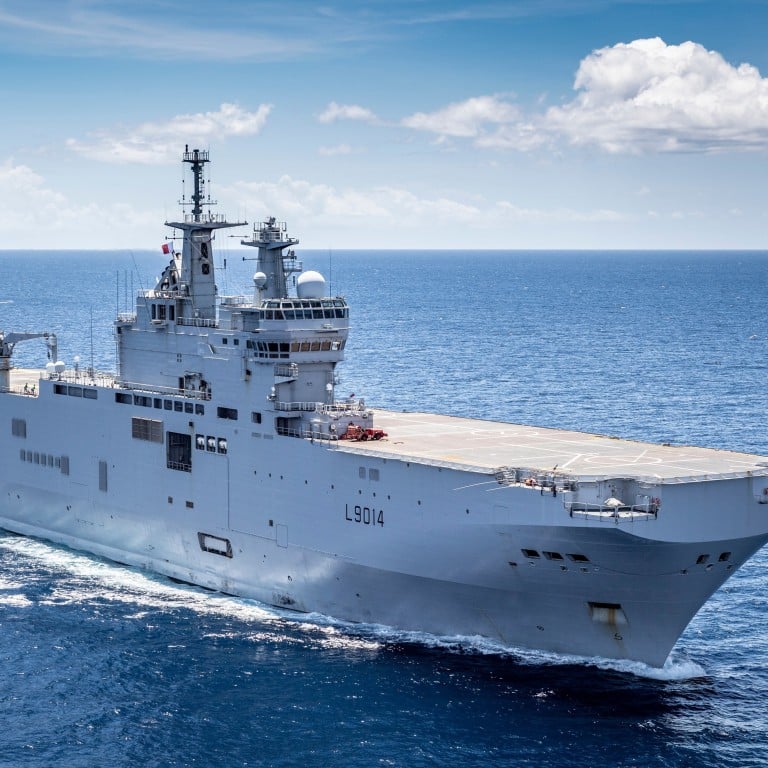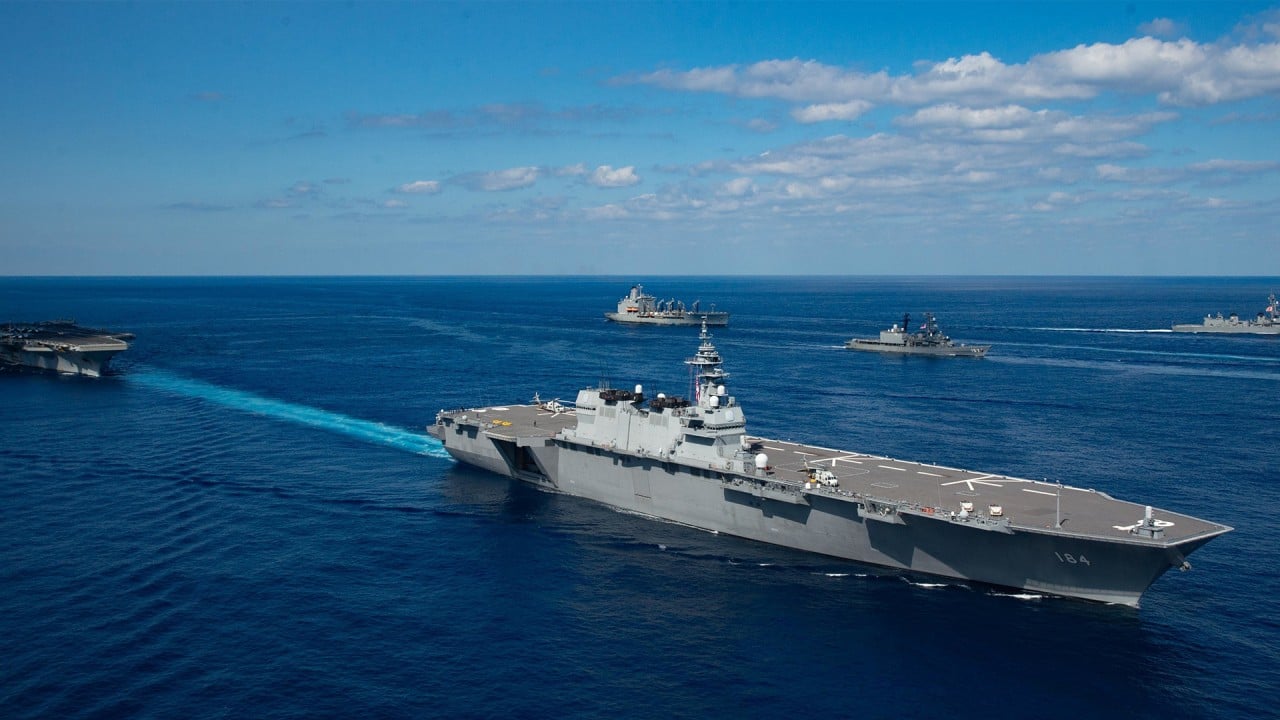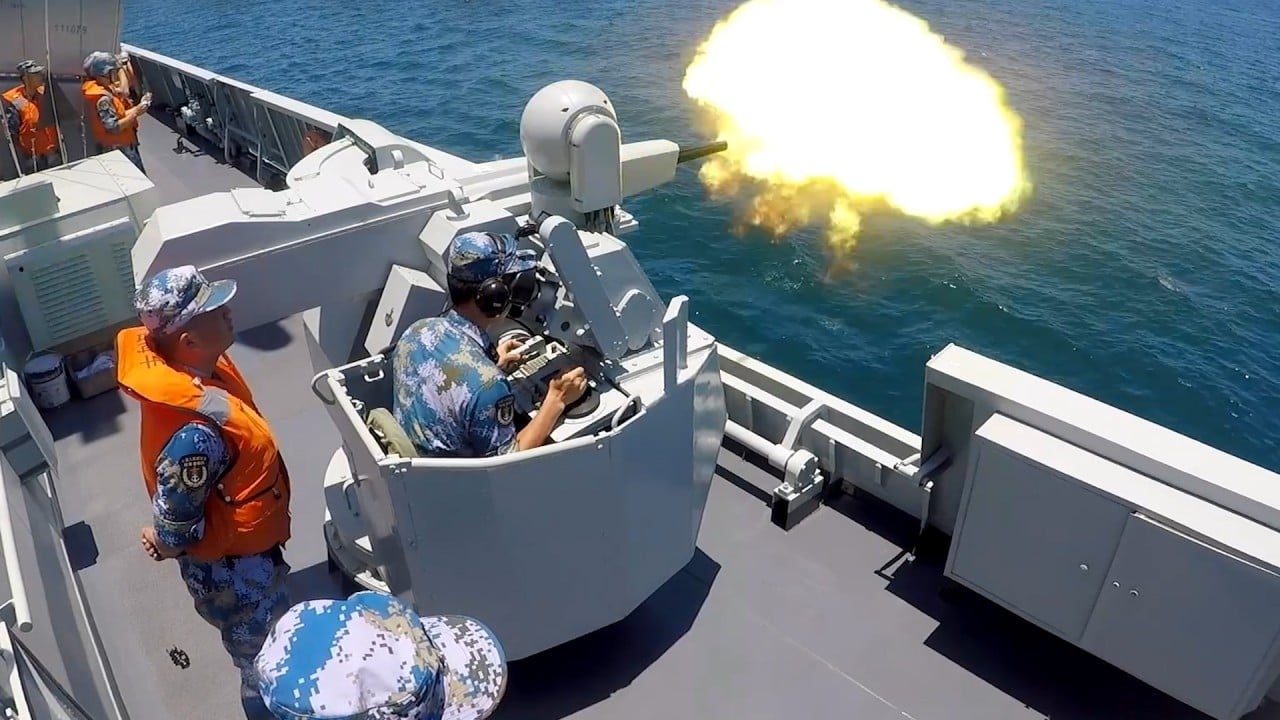
Explainer | South China Sea: why France is flexing its muscles in the contested waters
- France sent warships to South China Sea ahead of joint exercises with US and Japan, after its nuclear submarine conducted patrols
- Willingness to confront Beijing’s claims in the disputed waters reflects French interests in the Indo-Pacific and plans to work with Quad nations
What is France doing in the South China Sea?
The group will cross the South China Sea twice and take part in a joint military exercise with the United States and Japan in May. France’s plans do not include transiting the Taiwan Strait.

02:14
Japan-US hold joint military drills including cyberwarfare training as concerns about China grow
Parly said in 2019 at annual intergovernmental security forum the Shangri-La Dialogue that France would continue to sail in the South China Sea at least twice a year. She urged like-minded countries to do likewise, to ensure open access to the waters was maintained.
In 2019, Beijing made the rare move of accusing France of making an illegal entry into Chinese waters, after its frigate Vendemiaire sailed through the Taiwan Strait. The French government called it a normal operation that it had also conducted previously.
Is France’s presence in the Pacific a new thing?
French naval ships have been operating in the South China Sea for years. The present three-month mission has been an annual event since 2015, while the country has carried out joint drills with Australia, Vietnam and Malaysia – even if this was less eye-catching when the South China Sea was a less sensitive topic.
South China Sea: the dispute that could start a military conflict
In 2015, France issued a joint declaration with the Philippines, saying both countries opposed “any acquisition or claim” that was “in violation of international law”. This was considered to be aimed at China.
At that year’s Shangri-La Dialogue, France announced its intention to coordinate joint European Union patrols in the contested waters, to promote freedom of navigation.
Why does the South China Sea concern France?
France has territories, and therefore exclusive economic zones around them, in the Indian Ocean and the southern Pacific. It attaches great importance to its interests in the region and has forged close security ties with countries there.
France followed the US in launching its own version of an Indo-Pacific strategy in 2018.

02:32
Washington’s hardened position on Beijing’s claims in South China Sea heightens US-China tensions
Along with other European countries, it has said repeatedly that freedom of navigation must be preserved in the South China Sea, which is a critical route for global trade.

01:25
Hong Kong-based warship joins drill in South China Sea
France this year issued a joint statement to the United Nations with Germany and Britain, in support of the 2016 Hague tribunal ruling.
What is China’s response to the French military?
Beijing has been irritated by what it has seen as interference and provocation by the US military in recent years, but it was largely restrained in its public criticism of the latest French operations.
Its foreign ministry said China respected all countries’ rights of freedom of navigation and overflight in the South China Sea under international law, but opposed any country using freedom of navigation to undermine China’s sovereignty or regional peace and stability.
State media has accused France of contributing to the US’ “anti-China stratagems” and said the European country had no place in the South China Sea.
Analysts expect France to further reinforce its military presence in the waters to oppose Beijing’s territorial claims.

